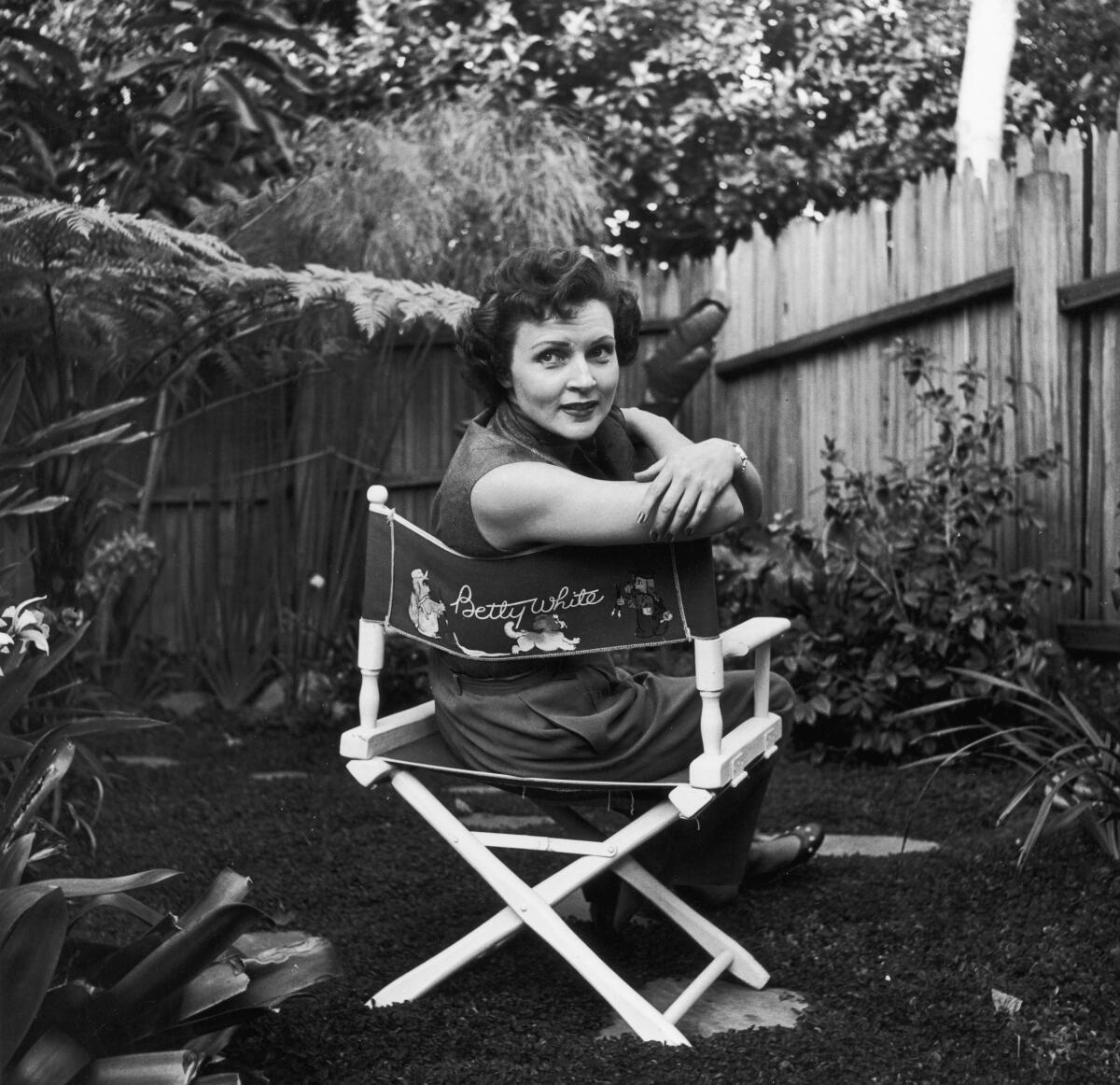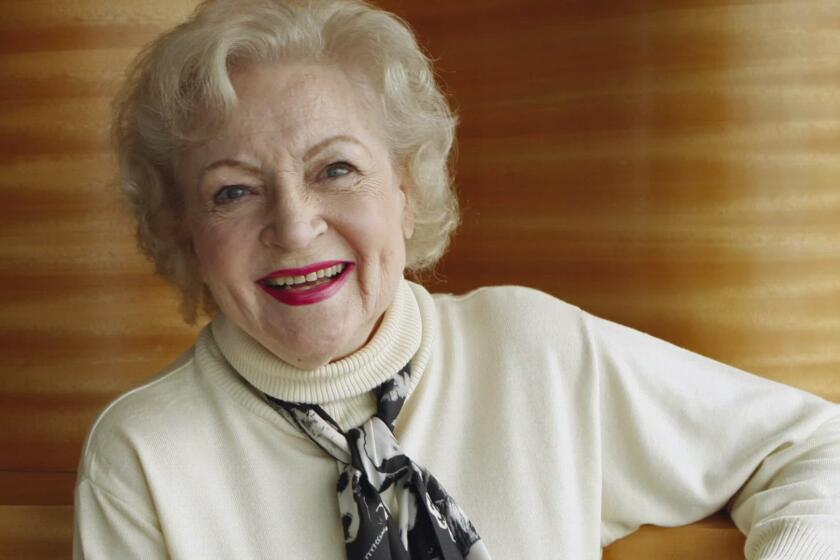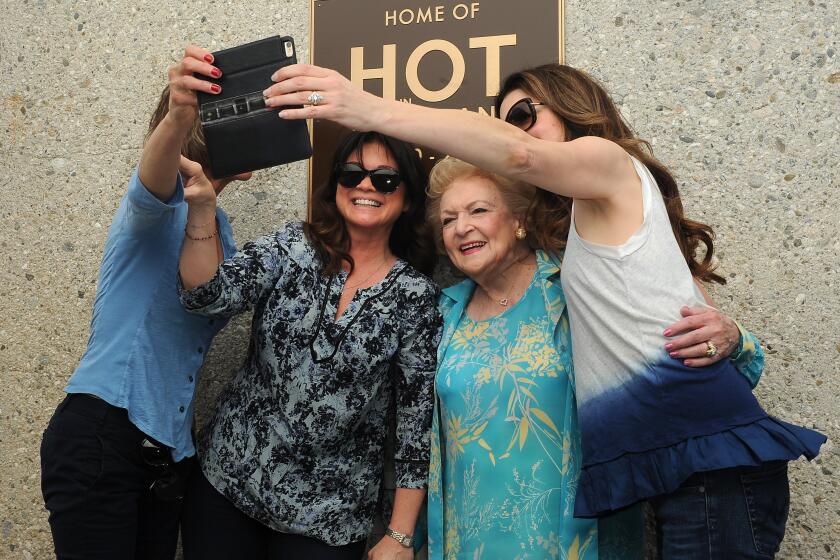What made Betty White the most beloved TV star of her (or maybe any) generation

Betty White, perhaps the most beloved actress and personality of her and several other generations, died Friday, New Year’s Eve, 17 days short of what would have been her 100th birthday — a landmark already being celebrated in media and social media.
Depending on where you joined White’s seven-plus-decade journey through show business — at every stage of which she managed to define a role for a Woman Her Age that was also uniquely and unmistakably Betty White — you might know her first as a pioneer of television talk, variety and situation comedy; host of Rose and Macy’s parades; a smart, sparky game show panelist; a reliably unbridled and funny talk show guest; dark-hearted “Happy Homemaker” Sue Ann Nivens on “The Mary Tyler Show”; sweet Rose Nylund on “The Golden Girls”; romantically active Elka Ostrovsky on “Hot in Cleveland”; a soap opera villain on “The Bold and the Beautiful”; or Ryan Reynolds’ grandmother in “The Proposal.”
Or countless other places, from music videos to commercials, from hosting “WWE Raw” to hosting “Saturday Night Live.” Her credits, including at least three titled “The Betty White Show,” her awards and historical firsts, including making tap dancer and singer Arthur Duncan the first Black member of a variety show cast (on the first of those “Betty White” shows), will be mentioned many times many places in the coming days, and only fractionally accounted here. But the great scope of her work, the number of uses to which her talent was put year in and year out, are tribute to her agreed-upon cultural necessity, to the general recognition of her particular sneaky genius. On both “The Mary Tyler Moore Show” and “Hot in Cleveland,” her character was originally meant to appear only once. But the power of White demanded her return.
‘The Mary Tyler Moore Show’ and ‘Golden Girls’ actor died Friday, just weeks before celebrating her 100th birthday.
Graced with bright eyes and a wide, dimpled smile, she radiated delight: delight to be working, delight to be alive, delight in conversation, delight in animals, but also delight in wickedness. She could turn a lilting voice to sharp ends, and a combination of these effects applied in different proportions — of innocence masking experience and experience informing innocence — would serve her through her career.
Although White appeared in several movies, television was her medium, and her association with it ran back past its commercial beginnings — her first appearance was in 1939 on an experimental Los Angeles channel, as a recent high school graduate, dancing with a classmate to “The Merry Widow Waltz.” When TV found its legs a decade later, White, who had some small success in radio in the meantime, was there, co-hosting (and later hosting solo) an ad-libbed 5 1/2-hour, six-day-a-week program called “Hollywood on Television.” A sketch from a nighttime version of the show became White’s first situation comedy, “Life With Elizabeth,” which (in another first) she co-produced; her character is not a ditz or a clown, but an intelligent woman in a knockabout but equal partnership with her husband, and her performance remains remarkably fresh and natural.
This early work gave her a thorough understanding of what it means to live on camera, and the intimacy it creates. Watch any of her many, always rewarding talk show appearances — she will turn from the host to sell a remark straight to the audience, bringing you in, making a bond. Her conversation was casual; her jokes subtle but structured. (Showing Johnny Carson the handwritten manuscript of a novel she had written at 11: “I found something I got a bang out of — [turning to the camera, apologetically] I mean a kick out of. [A beat out of smiling.] Just reminiscing.” There is never a sense that she is anything less than perfectly at ease, as a performer or as a person.
The beloved TV icon, whose work included ‘The Mary Tyler Moore Show,’ ‘Golden Girls’ and ‘Hot in Cleveland,’ died Dec. 31 at 99. Here’s a look back.
Putting risqué remarks or dirty words in the mouths of older people is a cheap ticket to an easy laugh. But one never felt that White, who liked to play in a deadpan way off a reputation for sauciness — she was, she said, a person whose mind ran naturally to puns, and she was not above getting a laugh from a “What the hell” or bleeped bit of dialogue or a leering glance — was a pawn in these matters. Indeed, one felt she was always ahead of that game. That at 8 years old she wrote an L. Frank Baum-inspired screenplay called “Trouble in Paradoz,” featuring Mae West running loose over the rainbow, seems to presage much that followed.
As White grew older — “aged” does not seem at all the right word — she began to represent something additional: a dream of what one’s senior years might look like, a standard bearer not for youth but youthfulness, of continued work and undiminished powers. “It’s incredible that I’m still in this business and you are still putting up with me,” she said, being paid tribute at the 2018 Emmy Awards. But the pleasure was all ours.
More to Read
The complete guide to home viewing
Get Screen Gab for everything about the TV shows and streaming movies everyone’s talking about.
You may occasionally receive promotional content from the Los Angeles Times.









